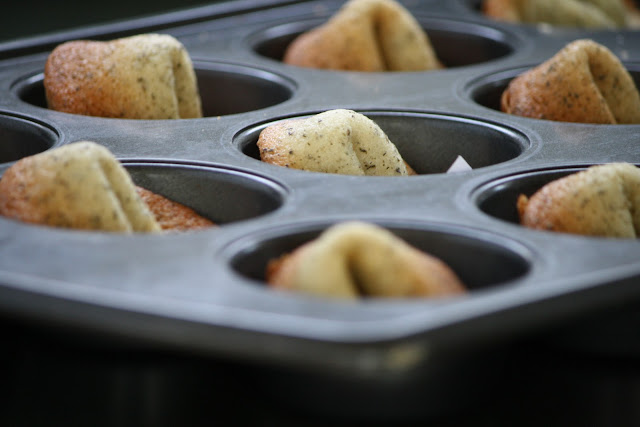This is the second North African country I've cooked in (Morocco being the first) that has allowed me to use my tagine - something that thrills me to end. It goes without saying that tagine cooking produces succulent, delicious one-pot meals, but the ingenuity of this ancient nomadic cooking vessel is both beautiful and functional in such wonderful ways. Everything from couscous to vegetables, meat or fruit dishes can be prepared in the tagine with mouth watering results. Today's Carrot Tagine is unique as it's served with marinated feta cheese as a warm salad - substantial enough to be a main course or perfect as a side dish, it captures all the flavors and spices I love most about Mediterranean cooking.
 |
| Map Courtesy of Lonely Planet |
Tunisian Mediterranean Cuisine has been influenced by Jewish, Berber, Arab, Turkish, French and Italian traditions. Unlike most North African cooking, Tunisian cuisine tends to be spicy, even fiery, but varies by region. In coastal areas, tuna and sardines are enjoyed, while game such as hare, partridge and squab are more commonly eaten in mountainous Atlas region. In accordance with Sharia, the religious laws of Islam, pork is forbidden. Owing to Tunisia's excellent growing climate, vegetables and fruits of all kinds are grown and enjoyed. Some examples include (but are not limited to) lemons, oranges, figs, dates, olives, apricots and quince; carrots, tomatoes, onions, peppers, potatoes and eggplant. Nuts of all varieties, including hazelnuts, almonds, chestnuts and pine nuts are grown as well. Spices and distilled, scented water include, harissa (hot pepper sauce), coriander, cumin, cinnamon, rose and orange water, as well as jasmine and geranium water. Note to self: find jasmine and geranium water a.s.a.p.!
Coriander, cloves, green peppercorns, cinnamon and nutmeg flavor the dish
I used a mortar and pestle to grind the spices, but a small spice/coffee grind works well too
Olive oil, parsley, vinegar, garlic, marjoram, cumin and cinnamon dressing
Tri-color couscous looks beautiful in Cambridge potter Terri Hass' original bowl
Four cups of carrots form the base for this warm Tunisian salad
Calmata olives top the salad - I could eat these morning, noon and night
Feta cheese marinates in the dressing for about 30 minutes, then swirl in yogurt before serving
My tagine (a gift from my BFF, Beth), just happens to be made in Tunisia
Saute onions and spices, add carrots and water and simmer till tender yet crisp
Sweet mint tea goes perfectly with the salad
A beautiful Mediteranean vegetarian tagine, makes a perfect lunch
Tunisian Carrot Tagine (Recipe Adapted from 150 Best Tagine Recipes, by Pat Crocker)
1 Tbsp. avocado or olive oil
1 cup chopped onions
1 Tbsp. Tunisian Five Spices
4 cups diced carrots
3/4 cup water, vegetable or chicken stock
6 oz feta cheese, drained
1/3 cup olive oil
1/4 cup chopped parsley
2 Tbsp. white wine vinegar
1 clove garlic, minced
1 Tbsp. chopped fresh marjoram
1 tsp. ground cumin
1/4 tsp. ground cinnamon
1/4 cup plain yogurt
1/2 cup sliced black olives
1. In the bottom of a flameproof tagine, heat oil over medium heat. Add onions and spice blend and cook, stirring, for 5 minutes. Add carrots and cook, stirring for 2 minutes. Add water, just until it covers the vegetables. Cover, reduce heat to low and simmer for 10-12 minutes or until vegetables are tender-crisp. Drain.
2. Meanwhile, cut feta into small cubes and place in a large bowl. In a clean jar with tight-fitting lid, combine olive oil, parsley, vinegar, garlic, marjoram, cumin and cinnamon. Shake well to combine and pour over the feta. Cover and let stand, stirring occasionally for at least 30 minutes.
3. Using a fork, stir yogurt into the feta and dressing. Add warm carrots and toss well. Divide salad among 4 plates with black olives. Can be served with cous-cous as well.
Tunisian Five Spices
1 Tbsp. coriander seeds
1 Tbsp. whole cloves
2 tsp. green or black peppercorns
1 piece (1-inch) cinnamon, crushed
1 Tbsp. ground nutmeg
1. In the bottom of a small tagine, spice wok or skillet, combine coriander, cloves, peppercorns and cinnamon. Toast over medium heat, stirring frequently for 2-3 minutes or until lightly colored and fragrant. Remove from direct heat just as the seeds pop, do not let the spices smoke and burn. Let cool.
2. In a mortar (using pestle) or small electric grinder, pound or grind toasted spices until coarse or finely ground. Transfer to a small bowl, stir in nutmeg.
3. Store in airtight (preferably dark) glass jar with lid in cool place for up to 3 months.
© 2010-2011, What's Cooking in Your World? Sarah Commerford/All Rights Reserved


















































